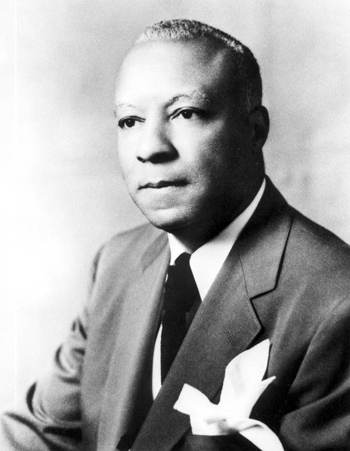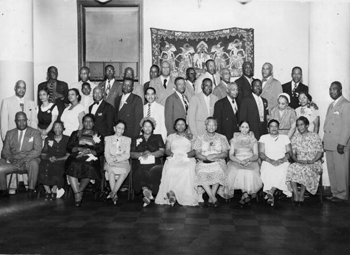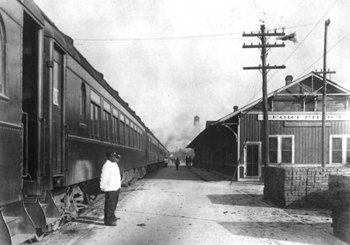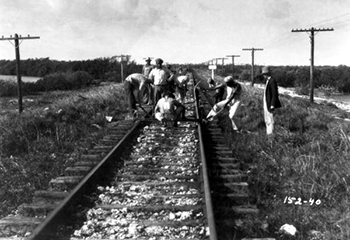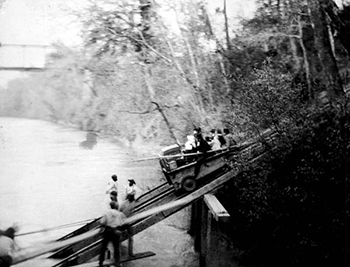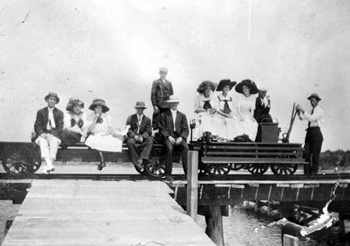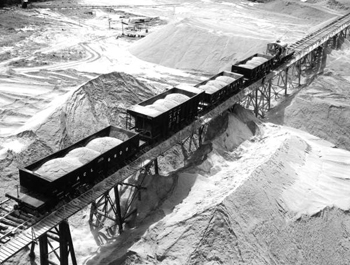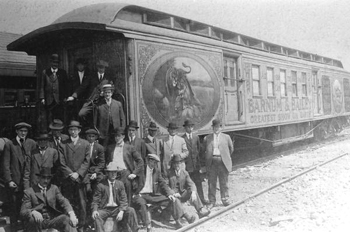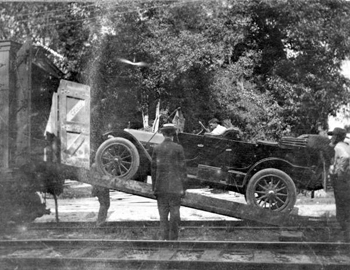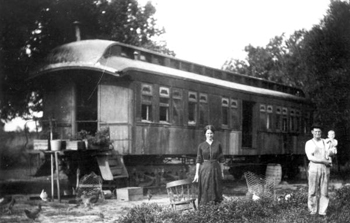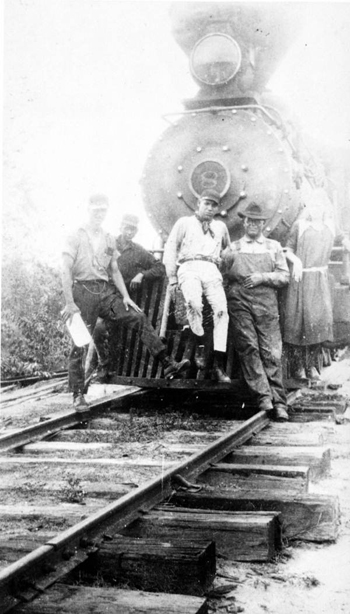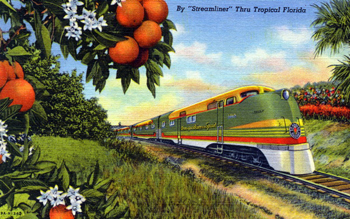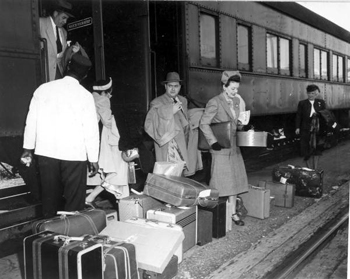Railroads Change Florida
Photos and History
A. Philip Randolph, First President of the Brotherhood of Sleeping Car Porters
A. Philip Randolph, the first president of the Brotherhood of Sleeping Car Porters, was born in Crescent City, Florida, and grew up in Jacksonville. The son of a Methodist minister, he attended the City College of New York, and later published The Messenger, a political and literary magazine. Porters assisted railroad passengers with getting on and off the train, and with their luggage. The Brotherhood of Sleeping Car Porters was a union that advocated for these workers' rights. The 1937 contract between the Brotherhood of Sleeping Car Porters and the Pullman Company cut working hours, increased pay, and improved working conditions.
Randolph was also a major influence in ending discrimination in defense plants and segregation of the U.S. military. He was director of the August 28, 1963, March on Washington, D.C. — the largest civil rights demonstration in American history.
Portrait of A. Philip Randolph (19--)
Image number: RC10874
Group portrait of members attending the Brotherhood of Sleeping Car Porters convention in Washington, D.C. (195-)
Image number: PR76767
The membership of the Brotherhood of Sleeping Car Porters included the African-American porters and maids who worked on the railway trains.
Florida East Coast Railway station: Fort Pierce
Image number: PR00824
Railroad Construction Crews
Railroad workers laid and maintained railroad tracks across Florida. They often used call-and-response work songs to set the pace when laying track.
Gandy dancers straightening track: Miami Region, Florida
Image number: RC13739
Short Rails
In addition to the large railroad systems, many short rail lines and specialized systems operated in Florida. They reached rural communities and provided necessary rail transportation for industries such as timber and phosphate mining. In many locations, however, once the resources were gone, the trains soon disappeared.
Passengers and baggage on railroad cart to steamship (1895)
Image number: PR100969
Small open motor train: Melbourne Beach, Florida (19--)
Image number: PR09323
Bird's-eye view showing phosphate being shipped by the Atlantic Coast Line railroad to the International Minerals Corporation factory for processing: Mulberry, Florida (1947)
Image number: C005919
Accompanying note: "From field plant to factory for drying and final processing—here phosphate is 14% moisture content, following process—less than 2%."
The Golden Age of Florida Train Travel
In the early decades of the 20th century, trains such as the Florida Special and the Orange Blossom Special brought tourists all the way to Miami and beyond. Commercial lines transported Florida's produce and other products to northern markets.
Moving the tomato crop (1921)
Image number: N048843
The Moore Haven and Clewiston Railway (MH & C Ry) was acquired by the Atlantic Coast Line Railroad Company (ACL) on July 1, 1925.
Men standing by Barnum & Bailey Circus railroad car
Image number: FP82435a
Car being loaded onto a train at De Leon Springs for a trip to Buffalo, New York (1912)
Image number: PR13139
Family using a railroad car of the Tavares and Gulf Railroad as a home: Tavares, Florida (ca. 1914)
Image number: RC10646
Gulf, Florida, and Alabama Railroad Company engine number 8 (ca. 1920)
Image number: N038597
Left to right: Victor Hutchins, conductor; Athon Hicks, fireman; Ivan Leonard, Engineer for Gulf, Florida and Alabama Railway Company, E. W. Shaw, Engine 8's engineer; Louise Leonard, station agent.
Falco was the end of the 26-mile line of the Gulf, Florida, and Alabama Railroad Company between Galliver, Florida and Falco, Alabama. Engine 8 was used for the Gulf, Florida, and Alabama Railroad Company and Louisville and Nashville's Pensacola and Atlantic Division line.
Orange Blossom Special (postmarked 1948)
Image number: PC2948
Mr. and Mrs. W.S. Marshall arrive for the conference: Palm Beach, Florida (1948)
Image number: C008916

 Listen: The Assorted Selections Program
Listen: The Assorted Selections Program